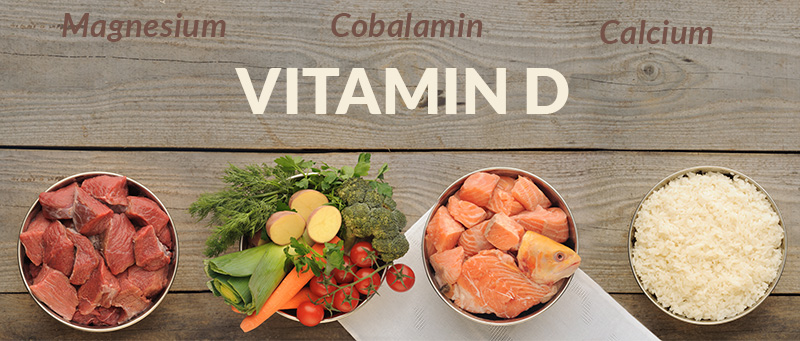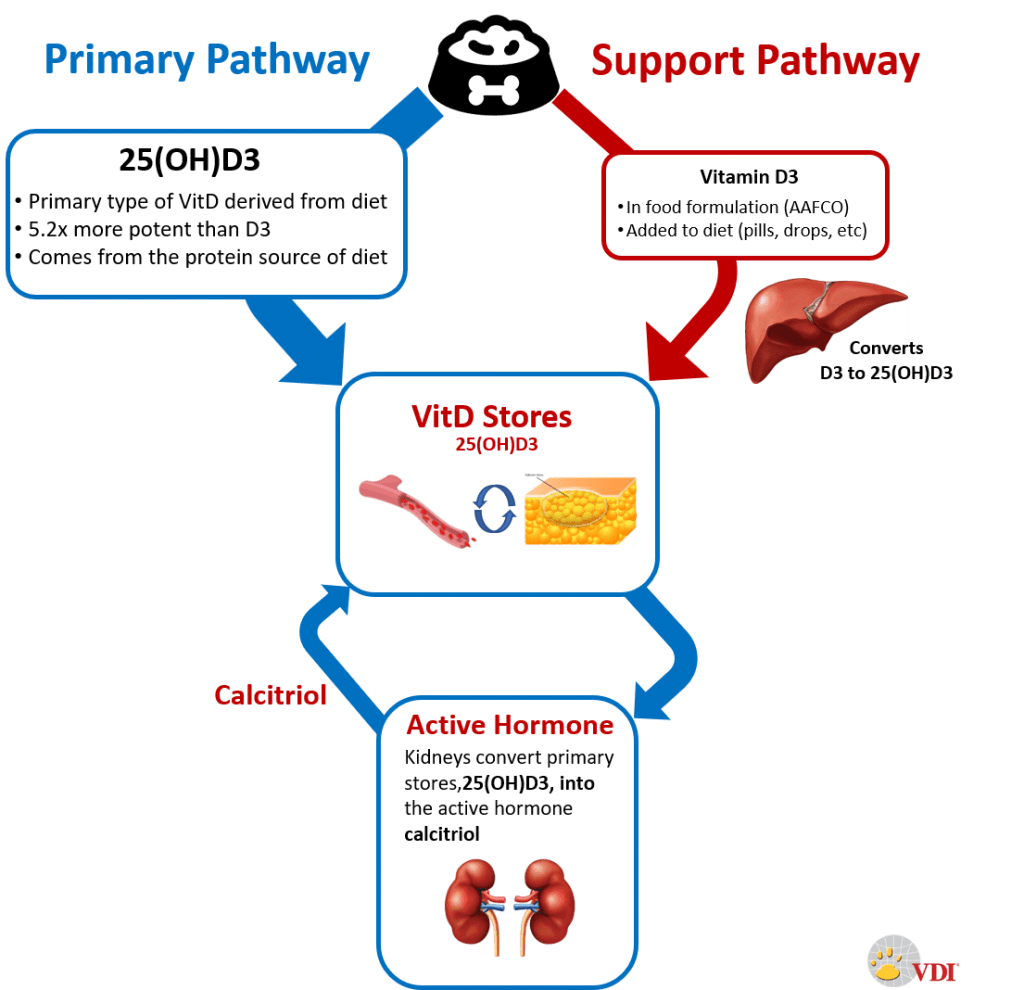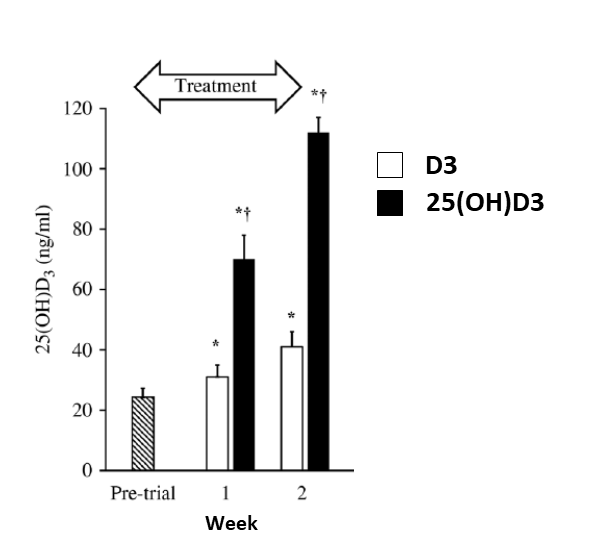
The term vitamin D has become a catch-all for three different forms of vitamin D: D3, 25(OH)D3, and 1,25(OH)2D3 (calcitriol), as well as the 24-hydroxylated components. The routinely measured and primary store of vitamin D is 25(OH)D3.
Vitamin D Metabolism
In a dog or cats’ diet, the primary available format is both D3 and 25(OH)D3. While commercial food is supplemented with D3, the vast majority is coming from the protein source (chicken, salmon, lamb, etc) in the form of 25(OH)D3 – shown along the blue path in the figure.
Commercial food does not measure this vitD content; labeling is only referring to the ADDED D3, shown as the red path in the figure.

Why this matters:
25(OH)D3 and D3 do not have the same potency.

In a recent study (1) dogs supplemented with the same vitD dose of either D3 or 25(OH)D3 found that 25(OH)D3 was 5.2 times more potent than D3. Dogs absorbed 25(OH)D3 faster and achieved higher levels.
When evaluating a dog or cats’ vitamin D status, vitamin D deficiency (<40ng/mL) may be a proxy for a poor diet.
References:
- Young, L (2017) Serum 25-hydroxyvitamin D3 and 24R,25-dihydroxyvitamin D3 concentrations in adult dogs are more substantially increased by oral supplementation of 25-hydroxyvitamin D3 than by vitamin D3. J Nutr Sci
